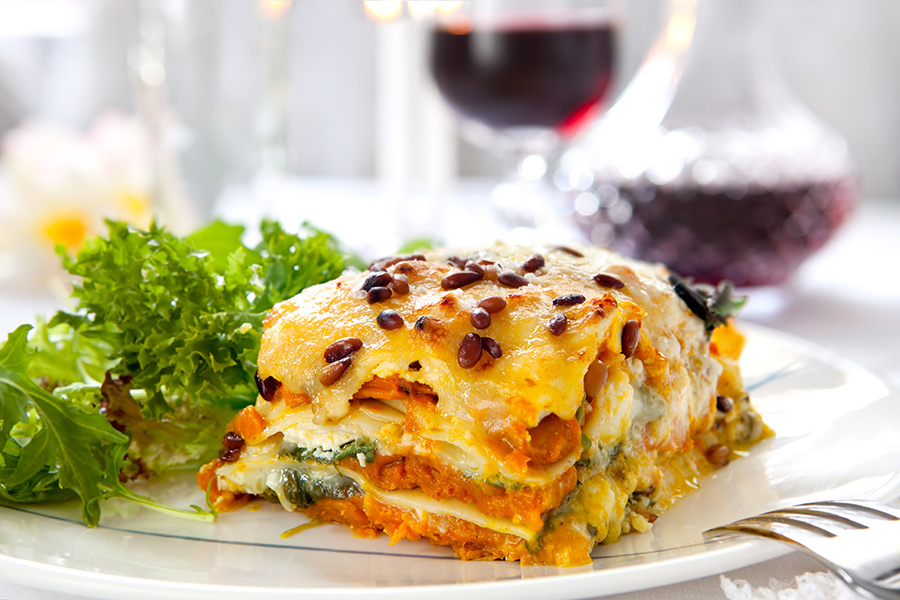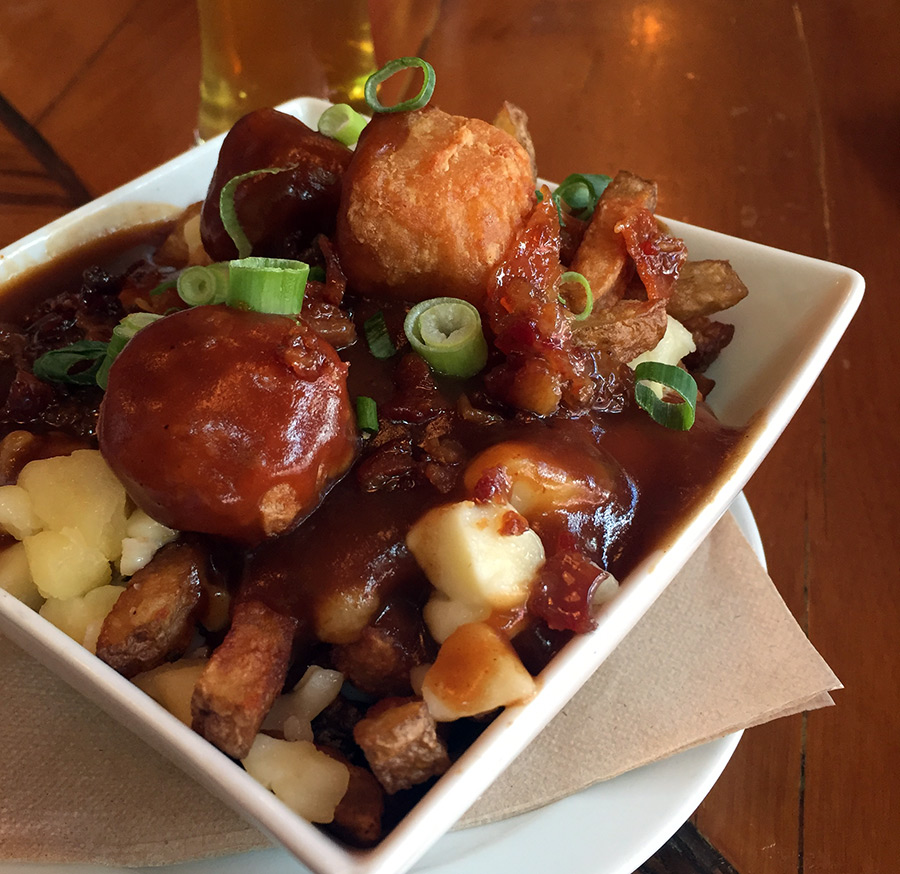As Canadians add layers to ward off the elements, they also crave menu options with added layers. Flavour, warmth and comfort are naturally built into layered foods and should feature on cold weather menus.
Enzo D’Adamo, sales and marketing director for foodservice at Grisspasta, agrees.
“Customers are looking for heartier meals when the temperature drops, and of course, pasta is one of those heartier dishes. Pasta dishes come back into vogue and should be prominent on winter menus — layered products like lasagna, stuffed cannelloni, filled jumbo shells, and macaroni casserole.”

Strong foundations to build on
Quality ingredients are paramount to build strong foundations. For pasta, that means using ingredients grown in Canada and manufactured in Canada.
“Lasagna, by far, is my favourite quintessential cold weather layered food,” says D’Adamo.
“For an operator, lasagna covers all the bases. It can be made well in advance, has great portability and longevity. Lasagna thaws and reheats to serve while maintaining great taste and texture profile. Lasagna is a no brainer for operators.”
Grisspasta is well known for lasagna in the industry and offers many types (10″, 20″, thin-style, oven ready). With products packaged for foodservice — 10lb box with 4 x 2.5 lb individually wrapped packs to maintain integrity of the product — this family-owned company always puts quality first.
D’Adamo reminds us that “pasta remains a favourite and has become even more so in our desire for comfort throughout the pandemic. Pasta lends itself to so many possibilities, is delicious and nutritious.”
Benefits of layered pasta dishes
- Time savers – making ahead and in large quantities
- Outdoor patio friendly — portioned and baked in ceramic, these dishes retain heat
- Infinite combinations — easily tweaked to fit season
Towers of strength
Holding it all together is key to visually appealing layered dishes, whether open portioned or contained. Using an ingredient that provides strength but also brings flavour is a bonus.
“When I think of layered foods, I think of premium food, quality ingredients, taste variety and appetizing visual presentation — lasagna, casseroles, premium sandwiches and layered desserts,” says Steve Hutchinson, VP of marketing for foodservice, ingredients & export for Lactalis (Parmalat).
“Don’t underestimate the versatility of dairy in layered foods. Dairy is a fantastic ingredient. Cheese (hard, firm and soft varieties) is a great ingredient for taste variation and functionality (feta, fresh mozzarella, aged cheddar, etc.).”
And don’t count out cottage cheese, cream cheese, yogurt and whipping cream when assembling layered creations both sweet and savoury.
“When I think of layered foods, I think of premium food, quality ingredients, taste variety and appetizing visual presentation — lasagna, casseroles, premium sandwiches and layered desserts.”
Steve Hutchinson, VP of Marketing for Foodservice,
Ingredients & Export for Lactalis (Parmalat)
Building bridges (of flavour)
With a foundation of pasta and the strength of dairy, building hearty, quality layered dishes to winterize your menu is easy. The tricky part is choosing the combination that tells your story.
“Simply put, layered foods are a great way for operators to showcase their chef’s expertise and recipes that highlight their point of difference from other establishments,” says Hutchinson.
Customers’ flavour expectations are worldly. Yes, they love classics but they also desire more global mash-ups.
- Lasagna alla Bolognese → Butter Chicken Lasagna
- Spinach and Ricotta Lasagna → Harissa Roasted Vegetable Lasagna
- Pasta with Tomato Sauce → Pizza Pasta Skillet
- Greek Pastitsio → Southwest Style Pastitsio
- Classic Mac & Cheese → Chickpea Masala Mac & Cheese
Stack up layers and flavours to comfort customers and warm up your menu this winter.
Grisspasta/D’Adamo’s top lasagna tips:
- Never over-cook your lasagna. Stop cooking a minute or two before reaching al dente.
- Allow for rethermalizing. You also will have a product that resists breaking during assembly.
- Don’t use oil to separate pasta or lasagna sheets; oil will create a barrier on the pasta that will encourage the sauce to slide off.





